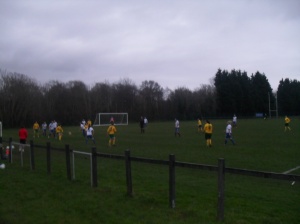The Olympic honeymoon period is over. Or is it? London 2012 hoped to be a turning point in women’s football as far as interest and attitudes were concerned. Less than six months on, are women reaping the rewards of a successful summer of sport, or are things pretty much the way they were?

“Attitudes have changed massively and all for the better,” says Laura McAllister. Picture by Sport Wales.
“Let the women play in more feminine clothes like they do in volleyball. They could, for example, have tighter shorts. Female players are pretty, if you excuse me for saying so, and they already have some different rules to men – such as playing with a lighter ball. That decision was taken to create a more female aesthetic, so why not do it in fashion?” – Sepp Blatter, 2004.
As head of football’s world governing body, Sepp Blatter is arguably the most powerful man in football, which makes these comments all the more shocking. But since then, the women’s game has come a long way. In Wales for example, there are roughly 5,000 registered female footballers, making it the largest participating sport among girls in the country. But compare this with male participants and the figures are not so impressive. There are nearly 40,000 boys registered in Wales, and an additional 50,000 seniors – a substantial yet unsurprising contrast to their female counterparts.
A recent BBC report outlined the difficulties facing the women’s game in England, focusing on the fortunes of Nottingham Forest Ladies. Pitiful wages, ground-sharing and low attendances were just some of the issues mentioned in this report. But back in July, more than 70,000 were in attendance at the Millennium Stadium to see Great Britain’s women defeat Brazil.
On Wednesday, the English Football Association announced that another league, a second division to the Women’s Super League (WSL), will be introduced in England. An article by The Guardian in April of this year explained how attendances for WSL games were up by 600 per cent since the league’s launch. So does this suggest support and interest in women’s football was on the increase well before the supposed Olympic Revolution?
Laura McAllister played for Wales at international level, captaining the team along the way. She is now Chair of Sport Wales and believes interest has definitely developed since the summer.
“The games were well attended and we’ve had evidence from a range of sports that participation has increased from the Olympics,” she said. “Girls from the Cardiff area were able to be inspired by the best players in the world. A sporting snapshot shows the local impact of the Olympic football. The Vale Ladies & Girls Football Club launched a Primary School Girls Football League, which is the first of its kind in the Vale. 12 schools and 15 teams will get the opportunity to experience the game on a regular basis with matches being hosted at Cadoxton and Romilly Junior Schools. The matches will be played in a non-competitive format to encourage a turn up and play environment and with the emphasis based around the games being ‘fun’.
“Women and girls sport is a high priority for Sport Wales and for the football organisations in Wales,” she said. “Sport Wales invest in Welsh Football Trust’s regional plans to develop women and girls football – supporting clubs and leagues at the local level to increase the number of teams and players. Our funding streams such as Community Chest target underrepresented groups such as women and girls – £250,000 additional money was put into Community Chest this financial year. Sport Wales is also part of the Football Association of Wales’ Task Force on women and girls football working to change how the sport is organised to achieve the big growth that is possible.”
Indeed, Welsh football organisations are becoming increasingly proactive. In 2009, the FAW launched the Women’s Welsh Premier League, and this season, a revamped format means 12 teams now take part. Here are their locations:
Laura McAllister believes the Welsh Premier is doing “very well given the stage of development”. She said: “The national dimension this season is very important in creating a proper competition across Wales. There is a variation in standards but this is typical in a new league in the women’s game. The important thing is club development and the strengthening of women’s academies and development centres now.”
The league’s reigning champions, and current league-leaders, are Cardiff Metropolitan University. One of their players is 21-year-old defender Elin Haf Huxtable from Aberystwyth. She believes very little has changed since the Games:

